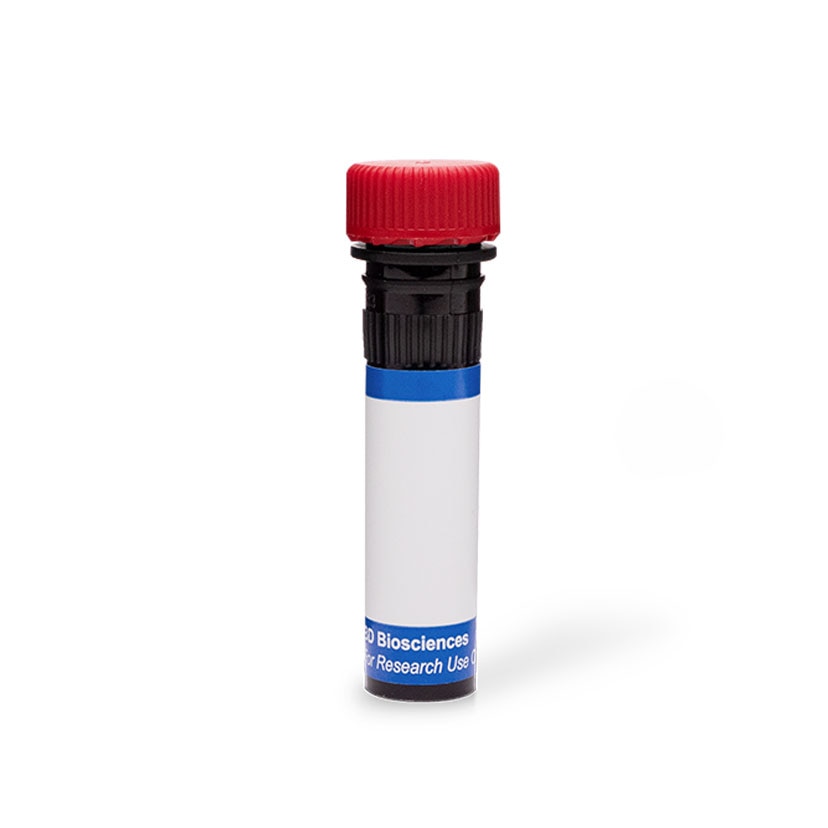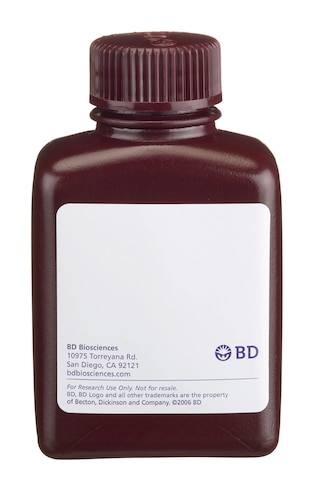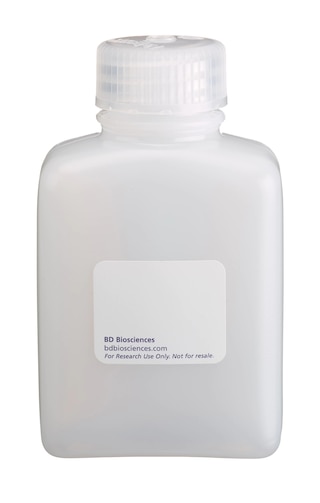-
Reagents
- Flow Cytometry Reagents
-
Western Blotting and Molecular Reagents
- Immunoassay Reagents
-
Single-Cell Multiomics Reagents
- BD® OMICS-Guard Sample Preservation Buffer
- BD® AbSeq Assay
- BD® Single-Cell Multiplexing Kit
- BD Rhapsody™ ATAC-Seq Assays
- BD Rhapsody™ Whole Transcriptome Analysis (WTA) Amplification Kit
- BD Rhapsody™ TCR/BCR Next Multiomic Assays
- BD Rhapsody™ Targeted mRNA Kits
- BD Rhapsody™ Accessory Kits
- BD® OMICS-One Protein Panels
-
Functional Assays
-
Microscopy and Imaging Reagents
-
Cell Preparation and Separation Reagents
-
- BD® OMICS-Guard Sample Preservation Buffer
- BD® AbSeq Assay
- BD® Single-Cell Multiplexing Kit
- BD Rhapsody™ ATAC-Seq Assays
- BD Rhapsody™ Whole Transcriptome Analysis (WTA) Amplification Kit
- BD Rhapsody™ TCR/BCR Next Multiomic Assays
- BD Rhapsody™ Targeted mRNA Kits
- BD Rhapsody™ Accessory Kits
- BD® OMICS-One Protein Panels
- Switzerland (English)
-
Change country/language
Old Browser
This page has been recently translated and is available in French now.
Looks like you're visiting us from United States.
Would you like to stay on the current country site or be switched to your country?
BD Pharmingen™ PE Mouse anti-Mouse RORγt
Clone Q31-378 (RUO)

Multicolor flow cytometric analysis of mouse RORγt expression in thymocytes and Th17 polarized cells. BALB/c mouse thymocytes (Panel 1) or Th17 polarized cells (Panels 2 and 3) were stained with BD Horizon™ Fixable Viability Stain 450 (Cat. No. 562247), fixed and permeabilized using the BD Pharmingen™ Transcription Factor Buffer Set (Cat. No. 562574) and then stained with either PE Mouse Anti-Mouse RORγt antibody (Cat. No. 562607) or PE Mouse IgG2a, κ Isotype Control (Cat. No. 554648). The thymocytes were counterstained with APC Rat Anti-Mouse CD4 (Cat. No. 553051) and PerCP-Cy™5.5 Rat Anti-Mouse CD8a (Cat. No. 551162) antibodies. The Th17-polarized cells were counterstained with APC-Cy™7 Hamster Anti-Mouse CD3e (Cat. No. 557596), Alexa Fluor® 700 Rat Anti-Mouse CD4 (Cat. No. 557956), FITC Rat Anti-Mouse IFN-γ (Cat. No. 554411) and PerCP-Cy™5.5 Rat Anti-Mouse IL-17A (Cat. No. 560666) antibodies.
Panel 1: The overlapping histograms show the levels of IgG2a Control (Left) and RORγt (Right) staining in CD4+CD8- single-positive (dotted line) or CD4+CD8+ double-positive (solid line) thymocytes.
Panel 2: The overlapping histograms show the levels of IgG2a Control (Left) and RORγt (Right) staining in Th17-polarized IL-17A-IFN-γ+ (dotted line) or IL-17A+IFN-γ- (solid line) cells.
Panel 3: Two-color contour plots show the correlated expression patterns of IgG2a Control (Left) or ROR γ t (Right) staining versus IL-17A in Th17-polarized CD3+CD4+ cells.
The flow cytometric data were derived from viable cell-discriminated events with the forward and side light-scatter characteristics of intact single cells using a BD LSRFortessa™ Cytometer System.


Multicolor flow cytometric analysis of mouse RORγt expression in thymocytes and Th17 polarized cells. BALB/c mouse thymocytes (Panel 1) or Th17 polarized cells (Panels 2 and 3) were stained with BD Horizon™ Fixable Viability Stain 450 (Cat. No. 562247), fixed and permeabilized using the BD Pharmingen™ Transcription Factor Buffer Set (Cat. No. 562574) and then stained with either PE Mouse Anti-Mouse RORγt antibody (Cat. No. 562607) or PE Mouse IgG2a, κ Isotype Control (Cat. No. 554648). The thymocytes were counterstained with APC Rat Anti-Mouse CD4 (Cat. No. 553051) and PerCP-Cy™5.5 Rat Anti-Mouse CD8a (Cat. No. 551162) antibodies. The Th17-polarized cells were counterstained with APC-Cy™7 Hamster Anti-Mouse CD3e (Cat. No. 557596), Alexa Fluor® 700 Rat Anti-Mouse CD4 (Cat. No. 557956), FITC Rat Anti-Mouse IFN-γ (Cat. No. 554411) and PerCP-Cy™5.5 Rat Anti-Mouse IL-17A (Cat. No. 560666) antibodies.
Panel 1: The overlapping histograms show the levels of IgG2a Control (Left) and RORγt (Right) staining in CD4+CD8- single-positive (dotted line) or CD4+CD8+ double-positive (solid line) thymocytes.
Panel 2: The overlapping histograms show the levels of IgG2a Control (Left) and RORγt (Right) staining in Th17-polarized IL-17A-IFN-γ+ (dotted line) or IL-17A+IFN-γ- (solid line) cells.
Panel 3: Two-color contour plots show the correlated expression patterns of IgG2a Control (Left) or ROR γ t (Right) staining versus IL-17A in Th17-polarized CD3+CD4+ cells.
The flow cytometric data were derived from viable cell-discriminated events with the forward and side light-scatter characteristics of intact single cells using a BD LSRFortessa™ Cytometer System.

Multicolor flow cytometric analysis of mouse RORγt expression in thymocytes and Th17 polarized cells. BALB/c mouse thymocytes (Panel 1) or Th17 polarized cells (Panels 2 and 3) were stained with BD Horizon™ Fixable Viability Stain 450 (Cat. No. 562247), fixed and permeabilized using the BD Pharmingen™ Transcription Factor Buffer Set (Cat. No. 562574) and then stained with either PE Mouse Anti-Mouse RORγt antibody (Cat. No. 562607) or PE Mouse IgG2a, κ Isotype Control (Cat. No. 554648). The thymocytes were counterstained with APC Rat Anti-Mouse CD4 (Cat. No. 553051) and PerCP-Cy™5.5 Rat Anti-Mouse CD8a (Cat. No. 551162) antibodies. The Th17-polarized cells were counterstained with APC-Cy™7 Hamster Anti-Mouse CD3e (Cat. No. 557596), Alexa Fluor® 700 Rat Anti-Mouse CD4 (Cat. No. 557956), FITC Rat Anti-Mouse IFN-γ (Cat. No. 554411) and PerCP-Cy™5.5 Rat Anti-Mouse IL-17A (Cat. No. 560666) antibodies.
Panel 1: The overlapping histograms show the levels of IgG2a Control (Left) and RORγt (Right) staining in CD4+CD8- single-positive (dotted line) or CD4+CD8+ double-positive (solid line) thymocytes.
Panel 2: The overlapping histograms show the levels of IgG2a Control (Left) and RORγt (Right) staining in Th17-polarized IL-17A-IFN-γ+ (dotted line) or IL-17A+IFN-γ- (solid line) cells.
Panel 3: Two-color contour plots show the correlated expression patterns of IgG2a Control (Left) or ROR γ t (Right) staining versus IL-17A in Th17-polarized CD3+CD4+ cells.
The flow cytometric data were derived from viable cell-discriminated events with the forward and side light-scatter characteristics of intact single cells using a BD LSRFortessa™ Cytometer System.



Regulatory Status Legend
Any use of products other than the permitted use without the express written authorization of Becton, Dickinson and Company is strictly prohibited.
Preparation And Storage
Recommended Assay Procedures
Optimal staining occurs when using the PE Mouse anti-Mouse RORγt antibody with cells that have been fixed and permeabilized with the BD Pharmingen™ Transcription Factor Buffer Set (Cat. No. 562574). However, staining with this fluorescent antibody is also compatible when using target cells that have been fixed and permeabilized using BD Cytofix/Cytoperm™ Fixation/Permeablization Kit (Cat. No. 554714).
Product Notices
- Since applications vary, each investigator should titrate the reagent to obtain optimal results.
- An isotype control should be used at the same concentration as the antibody of interest.
- Caution: Sodium azide yields highly toxic hydrazoic acid under acidic conditions. Dilute azide compounds in running water before discarding to avoid accumulation of potentially explosive deposits in plumbing.
- For fluorochrome spectra and suitable instrument settings, please refer to our Multicolor Flow Cytometry web page at www.bdbiosciences.com/colors.
- Cy is a trademark of GE Healthcare.
- Please refer to www.bdbiosciences.com/us/s/resources for technical protocols.
Data Sheets
Companion Products






The Q31-378 monoclonal antibody recognizes mouse RORgamma t (RORγt), an isoform of RORgamma (RORγ). RORγt is a DNA-binding transcription factor that belongs to the ROR/RZR orphan nuclear receptor family. RORγt is expressed exclusively by lymphoid cells including CD4+CD8+ thymocytes, peripheral CD4+ Th17 and CD8+ Tc17 cells, NKT cells and innate lymphoid cells such as lymphoid tissue inducer (LTi) cells. RORγt plays essential roles in thymopoiesis, T cell homeostasis, differentiation of effector T lymphocytes and the development of secondary lymphoid tissues including lymph nodes and Peyer's patches.

Development References (9)
-
Bechtel S, Rosenfelder H, Duda A, et al. The full-ORF clone resource of the German cDNA Consortium. BMC Biochem. 2007; 8:399-410. (Biology). View Reference
-
Eberl G, Littman DR. The role of the nuclear hormone receptor RORgt in the development of lymph nodes and Peyer's patches. Immunol Rev. 2003; 195(195):81-90. (Biology). View Reference
-
Eberl G, Marmon S, Sunshine MJ, Rennert PD, Choi Y, Littman DR. An essential function for the nuclear receptor RORgamma(t) in the generation of fetal lymphoid tissue inducer cells. Nat Immunol. 2004; 5(1):64-73. (Biology). View Reference
-
Hamada H, Garcia-Hernandez MdlL, Reome JB, et al. Tc17, a unique subset of CD8 T cells that can protect against lethal influenza challenge. J Immunol. 2009; 182(6):3469-3481. (Biology). View Reference
-
He YW, Deftos ML, Ojala EW, Bevan MJ. RORgamma t, a novel isoform of an orphan receptor, negatively regulates Fas ligand expression and IL-2 production in T cells. Immunity. 1998; 9(6):797-806. (Biology). View Reference
-
Hirose T, Smith RJ, Jetten AM. ROR gamma: the third member of ROR/RZR orphan receptor subfamily that is highly expressed in skeletal muscle. Biochim Biophys Acta. 1994; 205(3):1976-1983. (Biology). View Reference
-
Ivanov, II, McKenzie BS, Zhou L, et al. The orphan nuclear receptor RORgammat directs the differentiation program of proinflammatory IL-17+ T helper cells. Cell. 2006; 126(6):1121-1133. (Biology). View Reference
-
Medvedev A, Yan ZH, Hirose T, Giguere V, Jetten AM. Cloning of a cDNA encoding the murine orphan receptor RZR/ROR gamma and characterization of its response element. Gene. 1996; 181(1-2):199-206. (Biology). View Reference
-
Unutmaz D. RORC2: the master of human Th17 cell programming. Eur J Immunol. 2009; 39(6):1452-1455. (Biology). View Reference
Please refer to Support Documents for Quality Certificates
Global - Refer to manufacturer's instructions for use and related User Manuals and Technical data sheets before using this products as described
Comparisons, where applicable, are made against older BD Technology, manual methods or are general performance claims. Comparisons are not made against non-BD technologies, unless otherwise noted.
For Research Use Only. Not for use in diagnostic or therapeutic procedures.